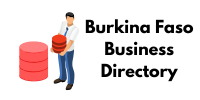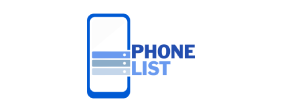Therefore, to learn how to manage your web hosting, it is essential that you know what cPanel is and what it is used for . And to explain it better, in this guide we have the collaboration of Carol Ramos , member of the marketing and communication team at LucusHost .
With Carol , learn how to manage your web hosting and discover in detail how it works and all the options offered by this control panel . Let’s get to it!
In this post you will find Show
What is cPanel and what is it used for?
cPanel is a control platform designed to make managing web hosting servers easier, simplifying both technical and non-technical tasks. For example, efficiency in managing hosting space is achieved thanks to the multiple tools offered by this control panel .
Within cPanel, you will find several options
What are the advantages and disadvantages of using cPanel?
This management system is a suitable option for those who are taking their first steps and are looking for an easy control panel solution. However, as with other web hosting panels, cPanel has its pros and cons.
Benefits of cPanel
Undoubtedly, among its advantages, it is essential to highlight:
Intuitive interface : It features an intuitive graphical interface that simplifies hosting server management, allowing users to manage it without requiring advanced technical knowledge.
A variety of functionalities : It offers various built-in tools and functions to manage web pages, databases, emails, files, and many more.
Automation : Facilitates the automation of daily server administration tasks, which optimizes time and decreases the likelihood of making errors.
Support : Given its wide use, this panel has a large number of resources both online support and tutorials, and even an active community of users offering help and assistance.
Support for multiple operating systems : It supports multiple operating systems, allowing it to be used in different server environments, offering flexibility to users.
Disadvantages of cPanel
On the other hand, it has some disadvantages that need to be pointed out:
Costs : Although web hosting providers often offer cPanel for free, their licenses come with a cost.
Initial learning curve : Although it is relatively intuitive, those unfamiliar with its interface and features might experience a short learning curve at first.
How to access cPanel?
Before we continue, let’s take a look at the different ways you can access your dashboard.
Typically, most web hosting providers provide a direct link to the cPanel control panel in their welcome emails.
However, if you did not receive a link or if there was an error, below I will show you different ways to access your dashboard .
1. Access cPanel from your domain
An alternative is to type yourdomain.com/cpanel into your browser’s search box to access the cPanel login screen.
Remember to replace “yourdomain.com” with the domain name associated with your hosting plan.
Take Maria from Mexico City, who is an enthusiastic environmentalist who learned about her neighborhood from a devoted Telegram group telegram database devoted to sustainability-related topics. She felt alone in her endeavors before joining this group; now, she works with like-minded people on projects ranging from courses on urban gardening to clean-up drives along contaminated waterways.
In case the DNS zone record for your domain fails
For example, if your site’s URL starts with HTTP, simply add “:2082” to the end of the address, like this: http://yourdomain.com:2082.
In case it starts with HTTPS , add “: 2083 ” to the URL, as shown here: https://yourdomain.com:2083 . Upon accessing the URL, you will be directed to the cPanel login page.
Enter your cPanel username and password, then click the “Log In” button .
Once inside the control panel, you will be able to see several modules and features.
Access cPanel from your client area
Finally, as with LucusHost , in most cases you have the option of going to your customer area from the hosting plan you have contracted, where you will find direct access to your cPanel panel.
Once there, you will be redirected directly to the control panel.
And voilà! You can now easily access your cPanel.
How to use cPanel? Complete Tutorial
Now that you know what cPanel is, along with its advantages and disadvantages, it’s time to look at the tools it provides for daily management.
The control panel features a comprehensive how to translate a site into ukrainian set of tools that greatly simplify the administration of your web hosting.
Below, I’ll show you some of the main features so you can start using it right away.
E-mail
In this section, you will have full control over all email-related tasks, allowing the creation of email accounts and the configuration of forwarding, filters and automatic responses , simplifying the management of email communication.
These features will help you complete those tasks effectively.
Cpanel email section
How to create an email account?
You’re probably thinking about creating a professional email linked to your domain name, right? To do so, follow these steps:
Go to the “Email” section in the “Email Accounts” module of cPanel.
Once there, a window similar to the one canada email lead shown in the image will open. Here you must click on the “Create” button .
Create cPanel email account
Below you will see a form where you need to:
Choose the domain you want to associate with the email account from the drop-down menu.
Add a username, which will correspond to the part before the @ symbol in the email address.
Set up a password to access your email. If you choose “Send login link to another email address” , you will receive information about the password setup process in an alternate email address that you have.
Defines the maximum space limit for that email account. This setting is particularly useful when you create multiple email addresses and want to prevent a single address from consuming all the available space in your account.
Create cPanel email accounts
Click the “Create” button . You’re done!Archives
In this Files section, you will find tools to manage your files on the server, such as uploading, downloading, copying and deleting them without the need for an FTP client .
Additionally, you can set privacy levels and configure a backup wizard .
These features make it easier to organize your website’s folder structure and content.
cPanel Files Section
How to backup in cPanel?
Whether you are just starting to create your website or you already have one, it is essential that you make regular backups.
From your cPanel panel, you can easily backup your account.
You can choose to perform a full backup of your account by clicking “Download a full account backup” , or you can perform partial backups, which may include your home directory, MySQL databases, email forwarders, or email filters.
If you are using a content management system
This area provides tools for creating and managing MySQL and PostgreSQL databases , allowing users to store and manage data effectively.
Database section
Domains
It is common for webmasters to use one hosting account for multiple websites or to set up additional domains, subdomains, and redirects.
Therefore, this part of cPanel gives you the ability to easily add and manage web domains , making it easy to manage multiple websites from a single platform.
Domains section
How to create DNS records for a domain from cPanel?
How to modify DNS records for a domain in cPanel?
Someday, you’ll need to edit a domain’s DNS zone in cPanel to add a Google Search Console verification code or modify MX records when changing email providers.
Therefore, you will need to follow these four steps:
Next, go to the domain for which you want to modify DNS records and click the “Edit” button .
DNS domain registration
Fill in the “TTL” , “Type” and “Record” fields according to the record you want to include, then click “Save Record” .
Save cPanel zone record
Metrics
The tools included in this module are designed to monitor website statistics, from counting visits to controlling resource usage .


